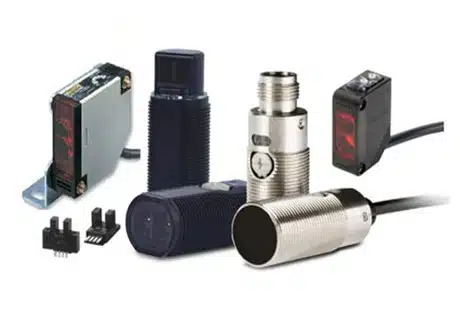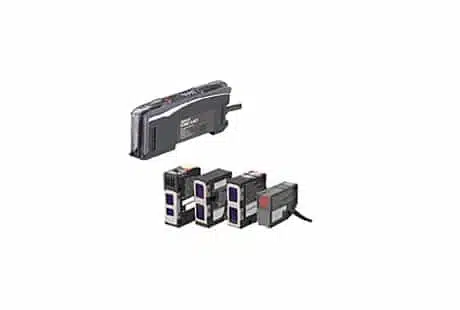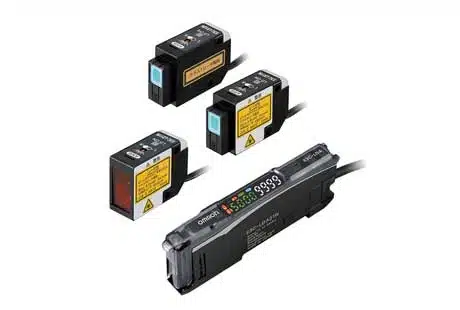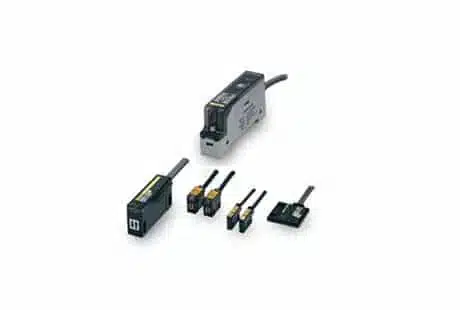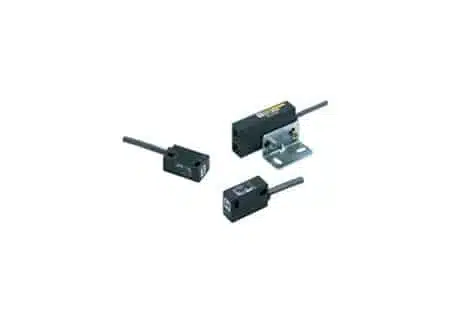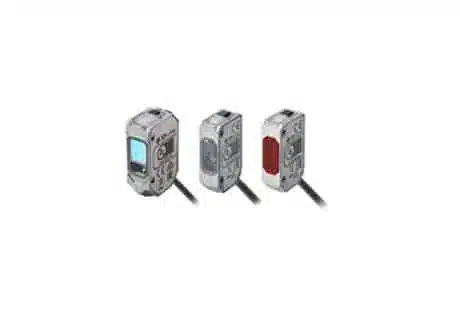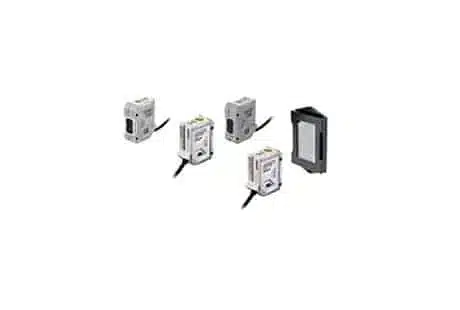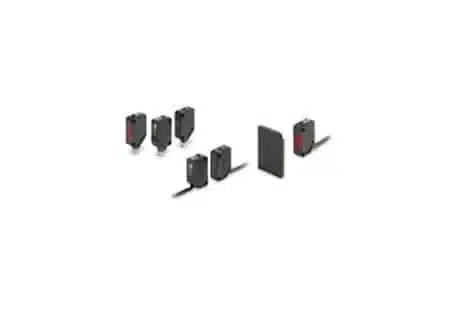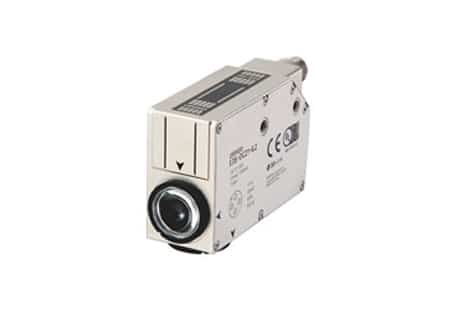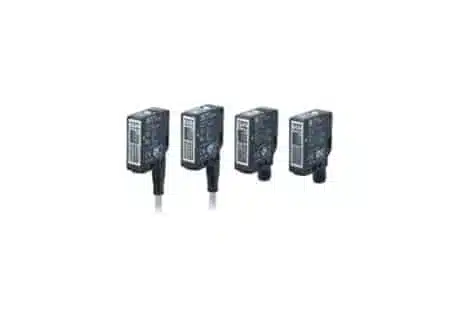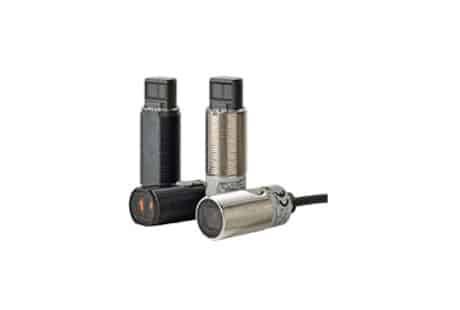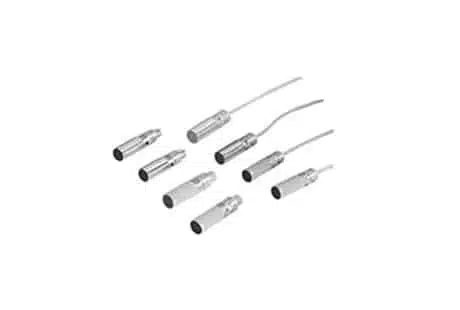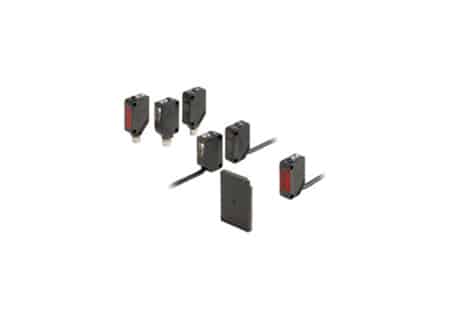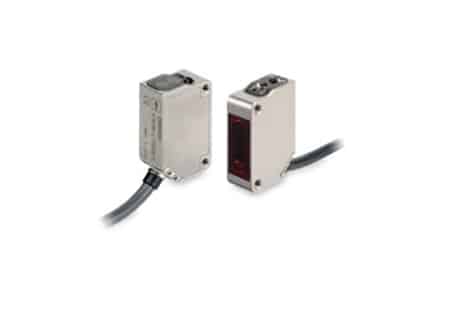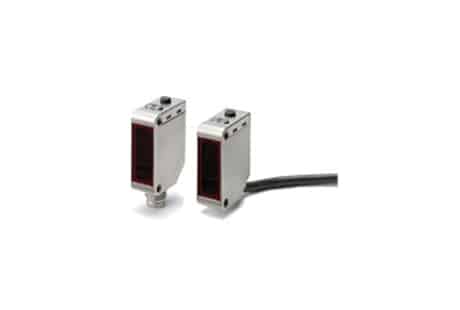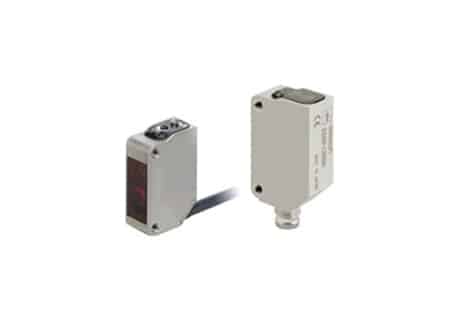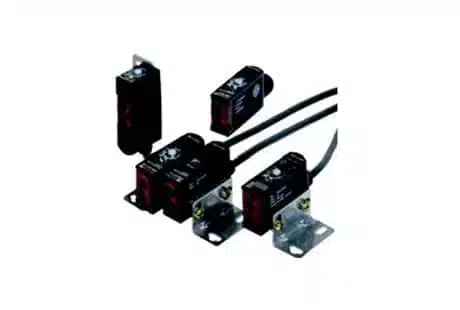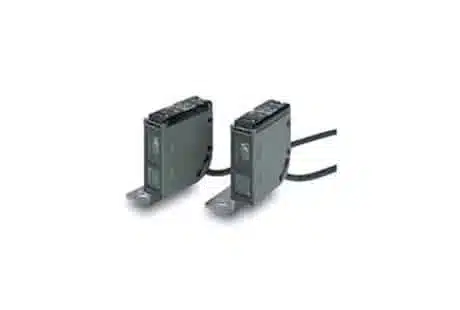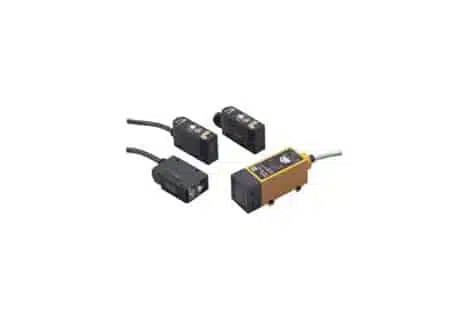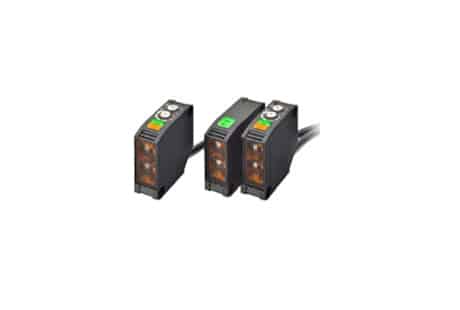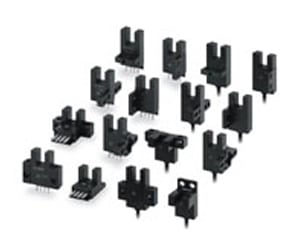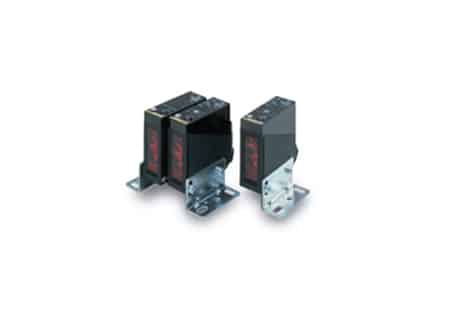Omron Photoelectric Sensors: Through Beam & Diffuse Reflective
Omron Photoelectric Sensors are a fantastic choice for anyone needing reliable and precise object detection in their operations. At IndMALL Automation, we’re proud to carry a wide selection of these sensors, each tailored for specific needs. Whether you’re dealing with different materials, colors, or challenging surface conditions, Omron has a sensor designed for the task.
From the E3NC Series, which excels in detecting various objects, including transparent and metallic items, to the E3Z Series with its extensive sensing range, these sensors ensure that your machinery performs optimally with minimal downtime. The E3AS Series even helps cut down on setup time with its easy-to-adjust features. Let IndMALL Automation help you find the perfect Omron sensor to keep your operations running smoothly.
Omron Photoelectric Sensors: E3NC Series
The E3NC Series Omron Photoelectric Sensor ensures stable detection across various photo-optical work pieces, adeptly managing diverse materials, colors, and surface conditions, including transparent and metallic objects.
E3NC Series
Omron Beam Sensor: E3C-LDA[]N Series
The E3C-LDA[]N Series Photoelectric Sensors offer three beam types, enabling up to 1,000 mm detection range, designed for easy installation, and comparable sensing to through-beam sensors.
E3C-LDA[]N Series
Omron Photoelectric Switch: E3C Series
The E3C Series Photoelectric Sensors feature an Omron Industrial Automation Input indicator on the Sensor Unit, simplifying settings and enhancing user-friendliness by providing straightforward operation.
E3C Series
Omron Reflective Sensor: E3C-VS/VM Series
The E3C-VS/VM Series Omron Photoelectric Sensors excel in detecting small objects and subtle color differences, identifying thin 200μ wires and slight level differences, enhanced by Omron Automation Detection.
E3C-VS/VM Series
Omron Retro-reflective Sensor: E3AS Series
The E3AS Series Omron Distance Settable Photoelectric Sensors ensure reliable detection of challenging photo-optical work pieces, enhancing reliability and flexibility while reducing design and commissioning time.
E3AS Series
Omron Photo electric Sensor: E3ZR-C Series
The E3ZR-C Series Omron Small Spot/Mark Sensors feature advanced sealing against cutting oil, utilizing top-quality material cables, fluoro resin sheaths, and innovative HNBR and Fluororubber combination for optimal protection.
E3ZR-C Series
Omron Miniature Photoelectric Sensor: E3Z-IL Series
The E3Z-IL Series Omron I/O Link Photoelectric Sensors enhance manufacturing quality and efficiency by providing predictive monitoring and quick recovery, boosting uptime and minimizing downtime.
E3Z-IL Series
Omron Color Mark: E3S-DC Series
The E3S-DC Series Omron Color Mark Photoelectric Sensors adeptly detect subtle color differences with a wide-range light source, ensuring sufficient illumination even for glossy packaging applications.
E3S-DC Series
Photo Sensor Omron: E3S-DB Series
The E3S-DB Series Omron Transparent Object Detection Photoelectric Sensors enhance operating efficiency and notably reduce adjustment time for sensitivity and threshold, fostering streamlined operations.
E3S-DB Series
Omron Photoelectric Sensor E3FA, E3RA, E3FB, E3RB Series
The E3FA, E3RA, E3FB, and E3RB Series of Omron Photoelectric Sensors offer compact, versatile solutions with a visible red LED for easy alignment and smooth, flush mounting options.
E3FA, E3RA, E3FB, E3RB Series
Omron Through Beam Sensor: E3F3 Series
Utilizing up-to-date photo-IC technology, the sensor boasts increased noise immunity, an M18 DIN-sized ABS resin case, 30 cm sensing distance, sensitivity adjustment, and crucial short-circuit/reverse connection protection.
E3F3 Series
Omron Photoelectric Sensor E3Z
Omron’s E3Z Series sensors boast extensive sensing ranges and a minimal mechanical and optical axis offset of ±2.5°, simplifying optical axis adjustment and ensuring versatility across various models.
E3Z Series
Omron Photo electric Switch: E3ZM-C Series
The E3ZM-C series Omron Compact Photoelectric Sensors feature a stainless steel, oil-resistant body, improved spot visibility up to 1m, and a lineup including Through-beam Models with Orange Spot.
E3ZM-C Series
Omron Photo Sensors: E3ZM-B Series
The E3ZM-B Series of Omron Photo Sensors introduces a novel detection method, reliably identifying transparent objects irrespective of their shape, position, or contents.
E3ZM-B Series
Omron Photoelectric Switch: E3ZM Series
Omron’s E3ZM Photoelectric Switch offers robust resistance to detergents and disinfectants, excelling in harsh environments, and features BGS retro-reflective and through-beam models, enhancing its sensing capabilities.
E3ZM Series
Omron Diffuse Reflective Sensor: E3S-A Series
The E3S-A is a medium-sized photoelectric sensor equipped with an integrated amplifier.
E3S-A Series
Diffuse Reflective Sensor Omron: E3S-CL Series
Ensuring reliable detection independent of color/material with a mere 2% max black/white error, the sensor negates background influence and, housed in an IP67-protected metal body, offers notable oil resistance.
E3S-CL Series
Omron Diffuse Sensor: E3S-R Series
The E3S-R Series Transparent Object Detection Photoelectric Sensors are specifically designed to adeptly detect transparent objects, including glass wafers and LCD glass circuit boards, ensuring precise identification.
E3S-R Series
Omron Photoelectric Sensor E3JK
Featuring an 8-fold sensing distance increase, the sensors offer improved visibility, distinct red LED spots, large indicators, selectable power supply input (24-240 VDC/VAC), and options with infrared LEDs.
E3JK Series
Offering models with dark-ON operation indicators and up to 1kHz response frequency, these Photomicro sensors, available in eight shapes, feature standard flexible robot cables and a wide 5-24 VDC operating voltage range.
EE Series
Omron E3JM series
The E3JM Photoelectric Sensor, featuring a built-in power supply, is a cost-effective choice, contributing to overall cost reduction in applications while maintaining reliable performance.
E3JM Series
People Also Ask
What is the photoelectric sensor?
A photoelectric sensor is a device. It detects light changes. This sensor has two main parts: a light source and a receiver. The light source sends out light. The receiver catches the light.
When an object interrupts this light, the sensor knows. It then sends out a signal. This signal can start a process or stop it.
These sensors are used in many places. Examples are factories, doors, and alarms. They help machines and systems work safely and efficiently.
In short, a photoelectric sensor spots changes in light. This helps control and automate machines.
What does the OMRON photoelectric sensor do?
Understanding the OMRON Photoelectric Sensor
An OMRON photoelectric sensor is a little device. It helps to detect changes in light. The device uses light to notice objects. The sensor has two main parts: a light sender and a light receiver.
When something blocks the light, the sensor reacts. It sends a message to a machine. This message can tell the machine to start or stop.
OMRON sensors are used in various places. They are found in factories, security systems, and elevators. They make sure things work smoothly and safely.
In summary, OMRON photoelectric sensors use light. They notice objects and control machines based on that.
What are the three types of photoelectric sensors?
Three Types of Photoelectric Sensors
The first type is called “Through-Beam Sensors.” It has separate sender and receiver units. The sender sends light to the receiver. If something blocks the light, the sensor reacts.
The second type is “Retro-Reflective Sensors.” One unit sends and receives light. A reflector bounces light back to the sensor. When an object interrupts the light, the sensor activates.
The third type is “Diffuse Sensors.” It also has one unit for sending and receiving. The light bounces directly off the object and back to the sensor.
To recap: there are three types: Through-Beam, Retro-Reflective, and Diffuse sensors. Each works by detecting interruptions in light in different ways.
What is the purpose of photoelectric?
Purpose of Photoelectric Sensors
Photoelectric sensors play a key role in detecting objects using light. They spot things without touching them. The light helps them “see” if something is there.
They send signals when the light changes. These signals control machines and processes. For example, they might stop a conveyor belt.
Photoelectric sensors also help keep things safe. They can detect if something is in the way. This avoids damage and accidents in many systems.
In a nutshell, photoelectric sensors detect objects, control machines, and enhance safety. They use light to monitor and manage different processes and tasks.
How do I choose a photoelectric sensor?
Choosing a photoelectric sensor can be simple if we break it down into easy steps!
First, think about what you want to detect. Different sensors work best for different materials and shapes. Some sensors are great for spotting clear objects, while others are better for solid items.
Next, consider the space where you’ll put the sensor. Some sensors are small and fit into tight spots, while others might be a bit larger. Make sure the one you choose fits well in your space.
Also, think about the distance between the sensor and the object. Some sensors work best up close, while others can “see” objects from far away. You’ll need to match the sensor’s range with your specific needs.
Lastly, think about your budget. There are many sensors at different prices. It’s important to find one that fits your needs and your wallet.
And don’t forget: if you need help, you can always ask an expert!
So, in summary: know your object, measure your space, check the distance, consider your budget, and when in doubt, ask for help!
Feel free to reach out to specialists or read more about sensors to make the best choice!
Get the best price for Omron Photoelectric Sensors at IndMALL Automation.

